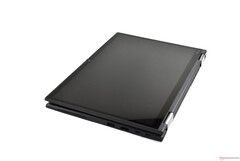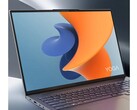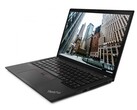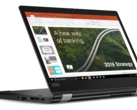The original widescreen format is experiencing a renaissance: 16:10 replaced 4:3 as the standard aspect ratio for laptops during the 2000s, only to be replaced by the even wider 16:9 in 2009. Now it's back - the shift back to the longer aspect ratio is probably primarily driven by the desire of making the display bezel below the monitor as narrow as possible.
The 16:10 format not only has this design advantage. It's also simply more practical for numerous tasks that are done on a laptop. This is true for programming and all other text-based applications, for example, because text usually follows the format of a vertically aligned page. So every bit of vertical space is valuable.
Combine that with the design advantage, and it quickly becomes clear why most high-end laptops this year are opting for the 16:10 format. This is even more evident for laptops that fold down into a tablet such as the Lenovo ThinkPad X13 Yoga Gen 2.
It doesn't only benefit from this in laptop mode - the advantage is even greater when you turn it into a tablet, especially when you place the device horizontally. There's a reason why the Apple iPad, for example, is manufactured in an even squarer 4:3 aspect ratio.
Therefore, it's not surprising that the Lenovo ThinkPad X13 Yoga Gen 2 managed to outperform its 16:9 X13 Yoga Gen 1 predecessor by three points in our comprehensive review's rating.















